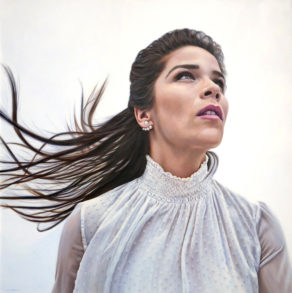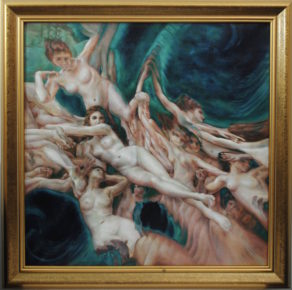
Stoney Creek artist Josh Tiessen is giving art enthusiasts a behind-the-scenes look at his creative process in a new YouTube video.
The video features Photoshop time-lapse and speed painting of Tiessen’s largest oil painting to date, Occidental Babylon.
Featuring spotted hyenas from Sub-Saharan Africa juxtaposed on a Wild West scene, Occidental Babylon was inspired by the California Gold Rush town of Bodie, famous for its saloon brawls, stagecoach robberies and weekly shootouts.
Beginning in 1848, $34 million in gold was extracted from local mines, but by the 1880s, the town was in decline. In 1932, Bodie’s weather-beaten buildings were razed in a catastrophic fire.
Occidental Babylon took Tiessen 1,200 hours over eight months to complete.
The work was recently chosen as the winner in Delusional: Jonathan LeVine’s Search for the Next Great Artist at Jonathan LeVine Projects Gallery in Jersey City, NJ.
Tiessen explains his rationale for Occidental Babylon in a passage on his website.
Spotted hyenas reside in Sub-Saharan Africa, so it’s logical to wonder why a pack of thirteen hyenas are roaming through a western town! Hyenas are carrion scavengers, able to break down bone with their strong teeth and jaws, extracting as much marrow nutrient as possible. Traditionally, the hyena has been a symbol for the unstable or sinister, and in some African cultures it is viewed as a grave robber. The Lion King’s hyena trio: Shenzi, Banzai, and Ed, entrenched character traits of savagery and cowardice in pop culture. For me, the concept of hyenas inhabiting an immoral western town came from Isaiah’s prophecy of judgment concerning Babylon, stating that desert creatures such as hyenas would one day inhabit its strongholds, a symbolic picture of how Babylon, the world’s greatest city, would be laid to waste by the Persian Empire.
Originally featured on Hamilton News









